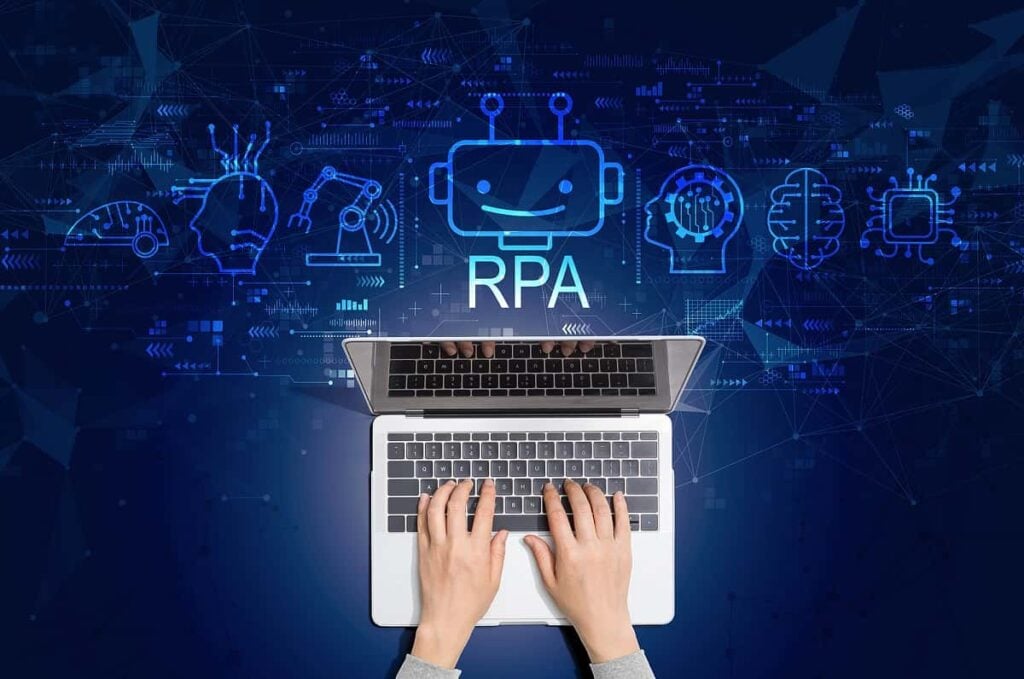UiPath Stock: Why Has It Been Falling Down?
Table of contents

The old “John in Mumbai” joke heralds back to the days when Indian support desk agents were given Western-sounding names which didn’t manage to fool anyone. These days that slight accent you hear when calling a support desk is the twang of Tagalog, the predominant language spoken in the Philippines. We’ll just say what everyone is thinking – Rosie in Manila is a whole lot more enjoyable to conversate with and slightly less recipe-driven than John in Mumbai. While support functions will never completely disappear, a lot more effort is going into automating the customer support function and tiering it based on how valuable a customer is.
Moving to Manila wasn’t just a function of customer experience, it was also about cost. Wage inflation has soared in India over the years and continues to:
A WTW survey of about 5,700 companies across 27 Asia-Pacific markets found that India is likely to see pay increases average 9.2% this year, one of the highest rates in the region and exceeding the 8.7% rise last year.
Credit: Nikkei Asia, Mar 13th 2022
This is driving companies to reconsider outsourcing back-office functions to “emerging market centers of excellence” and simply automating them, which means companies like UiPath (PATH) have robotic process automation (RPA) solutions that pretty much sell themselves. So, why is the stock price falling?
Why is UiPath Stock Falling Down?
Loss aversion is an interesting phenomenon to observe. A stock could appreciate +1,000% and nobody bats an eye. But heaven forbid that same stock falls 10% in a single day and investors immediately turn to the Ministry of Truth for answers, thus the clickbait title of this article.

For those of you unfamiliar with what UiPath does, you can come up to speed by reading our past pieces on hyperautomation and the UiPath initial public offering (IPO) which took place just over a year ago. Since that IPO, shares of UiPath have fallen 75% compared to an NYSE return of 5% over the same time frame. Whenever we talk about a stock price falling, we need to put that drop into context by looking at a benchmark and time frame. In this case, we’re using the exchange the stock trades on – the NYSE.
We can also consider the price the shares were offered at prior to the IPO’s first day of trading – $56 a share – and compare them to today’s price of $18.21 per share. Sophisticated institutional investors believed the company was worth $56 a share just a year ago and now you’re able to purchase them at a 68% discount. One reason for that might be that venture capitalists got ahead of themselves and bid up the company’s valuation to excessive levels. Below you can see how UiPath’s valuation spiked prior to the IPO.

It could be that the company was significantly overpriced, to begin with, and is now more appropriately priced compared to its peers. We can check this using our simple valuation ratio as seen below.
| Company | Market Cap (USD millions) | Last Quarter Revenue (USD millions) | Nanalyze Valuation Ratio |
| SPLUNK INC. (SPLK) | 19,609 | 665 | 7 |
| PALANTIR (PLTR) | 21,103 | 433 | 12 |
| SUMO LOGIC (SUMO) | 1,070 | 62 | 4 |
| ALTERYX (AYX) | 4,374 | 174 | 6 |
| UIPATH (PATH) | 9,665 | 290 | 8 |
| NICE (NICE) | 13,176 | 515 | 6 |
| PEGASYSTEMS (PEGA) | 6,252 | 316 | 5 |
| SNOWFLAKE (SNOW) | 53,935 | 384 | 35 |
| C3.AI, INC. (AI) | 1,807 | 70 | 6 |
Based on the above table, UiPath’s current valuation seems to be in line with its peers.
As UiPath shares continue sliding lower and lower, investors should rightfully check in with the company to see what’s changed. We pored through their most recent 10-K to extract metrics you should pay attention to going forward.
Key SaaS Metrics for UiPath Stock
If you’re not familiar with the concept of annual recurring revenues (ARR), then you’ll want to read our piece on The Best SaaS Stocks and How to Find Them which describes it succinctly as follows:
ARR is the amount of money a SaaS company is contractually obligated to receive in a given year if nothing changes – no new customers come on board, prices stay the same, and no customers cancel. This is different from revenues which reflect the actual dollars being received from customers.
Credit: Nanalyze
While UiPath uses ARR to describe “annualized renewal run-rate,” the concept is basically the same. A simple chart in their 10-K provides all the metrics needed to measure the health of this business going forward.

With over 10,000 customers paying them something or using some product of theirs, UiPath doesn’t have to generate leads anymore. Just 15% of those customers are paying them more than $100,000 a year, so there’s plenty of room for expansion. Around 73% of the increase in 2022 revenues was from existing customers reflecting their strong 145% net retention rate. This business couldn’t be healthier, and that’s why we were puzzled when shares dropped 28% a month ago because the company had the audacity to express caution about the situation in Europe and adjust guidance by around 5%. Here’s what we told Nanalyze Premium subscribers in an email alert about the drop:
UiPath (PATH) hit the skids today. While they beat expectations on Fiscal 2022 revenues and earnings, they warned on the effects of the war on their European business. This translated to a reduction in revenue guidance for fiscal 2023 (starts next quarter) of around 4.9%. There’s a global pandemic, a war, and a decade-long bull market that hasn’t really corrected. What do these analysts expect?
A 5% drop in guidance is hardly a reason for concern from where we’re sitting, and the company’s declining exposure to Europe amounts to less than 30% of Fiscal 2022 revenues.

Contrary to what some Americans might think, Europe isn’t a country with a capital called Paris, it’s a collection of 44 countries. Additionally, UiPath balls together Europe, Middle East, and Africa (EMEA) into a single category which totals 115 countries, one of which is Russia.
Stock Betas and Alpha Leaders
All things being equal, a stock will fall and rise based on the movements of the exchange it trades on. This financial concept is referred to as “beta,” and a stock with a beta of one will rise and fall at the same pace as the exchange it trades on. These movements change as beta changes:
- Market falls 10%
- Beta 1 stock falls 10%
- Beta 0.5 stock falls 5%
- Beta 2 stock falls 20%
We don’t know the beta for UiPath because it’s only begun trading recently. Besides, we already forgot how to calculate beta because it’s a dreadfully boring process and doesn’t add much value, to be honest. However, we use this example to illustrate that UiPath is always subject to the movements of the overall markets. Should the Ruskies decide to lob a tactical nuke over the wall at Kiev to celebrate Victory Day, you can be sure the markets will react accordingly. A market fall of 25% coupled with another 25% drop to account for the nuclear fallout that may drift towards UiPath offices should send UiPath shares into the single digits without a problem. The blue circle in the below diagram indicates the location of the company’s corporate office in Bucharest, Romania – where around a quarter of their employees are sitting – relative to Ukraine.

At that point, our portfolios will have bigger things to worry about, but you get the picture. If you’re a risk-averse investor, you need to be aware that tech stocks are risky regardless of how cheap you think they’re trading.
Conclusion
UiPath has been falling dramatically over the past year compared to broader market benchmarks which could imply it was overpriced, to begin with. Investors may have unrealistic expectations of growth as reflected in the recent drop of 28% that coincided with a 5% guidance adjustment. While there is risk associated with the turmoil in Europe, this may be priced into the current share price which doesn’t appear overvalued when compared to some peer names. When it comes to the core thesis and key SaaS metrics, things haven’t looked better for UiPath.
Sign up to our newsletter to get more of our great research delivered straight to your inbox!
Nanalyze Weekly includes useful insights written by our team of underpaid MBAs, research on new disruptive technology stocks flying under the radar, and summaries of our recent research. Always 100% free.















What is your Romanian fortune teller saying about UiPath – is it a buy ?
She’s down with the Rona right now.
fortunately i never followed any of your recommendation.you will end up broke chasing company with no earning trading at crazy valuation and keeping averaging on the downside
good luck
That’s good to hear because we don’t give recommendations.
Good point about 9th May. It makes sense to wait past that date before increasing any position now.
What is your view of UI Path having a co-CEO. While the addition was made to boost enterprise sales, does it raise any red flags in your view?
Very good question. We’ve been wondering why it’s all of a sudden trendy to have two CEOs. Several other companies have been doing this too. Initial thought would be that if they wanted to can the CEO they would have done so and gotten that out of the way. If you are a CEO and someone else is brought in to share your job it seems like that would be demoralizing. So perhaps this is the start of a broader trend which we must say we don’t like. If you Google “the co-CEO” there are quite a few opinions on this. As for how this affects UiPath specifically, we don’t have an opinion on that right now but will be watching it going forward. Thank you for the very good question!
UiPath is at 52 week low (around $11) and ARK is buying it. It may be a good time to have a new look at it.
Market cap: $6.1B. Ann revenue ~$1B. So P/S ratio = 6.
They burn $120M per quarter and have $1.7B in cash and equiv.
They are expected to grow revenue at 50% per year.
Thank you for the info Stan! We’ve been consistently saying this is a company worth looking at – not just because the valuation has corrected so dramatically, but because they provide a service that saves firms money. That will sell in bull and bear markets alike.
When I see ARK and Nanalyze agree on a stock – being positive / bullish – that makes it an easier buy. Such cases are rare, but UiPath is one of such cases.
If UiPath saves firms as much as they claim then this seems like a no-brainer – a rare case as you said. Of course, we always need to consider company-specific risk, and the fact that shares could fall further alongside the broader market.